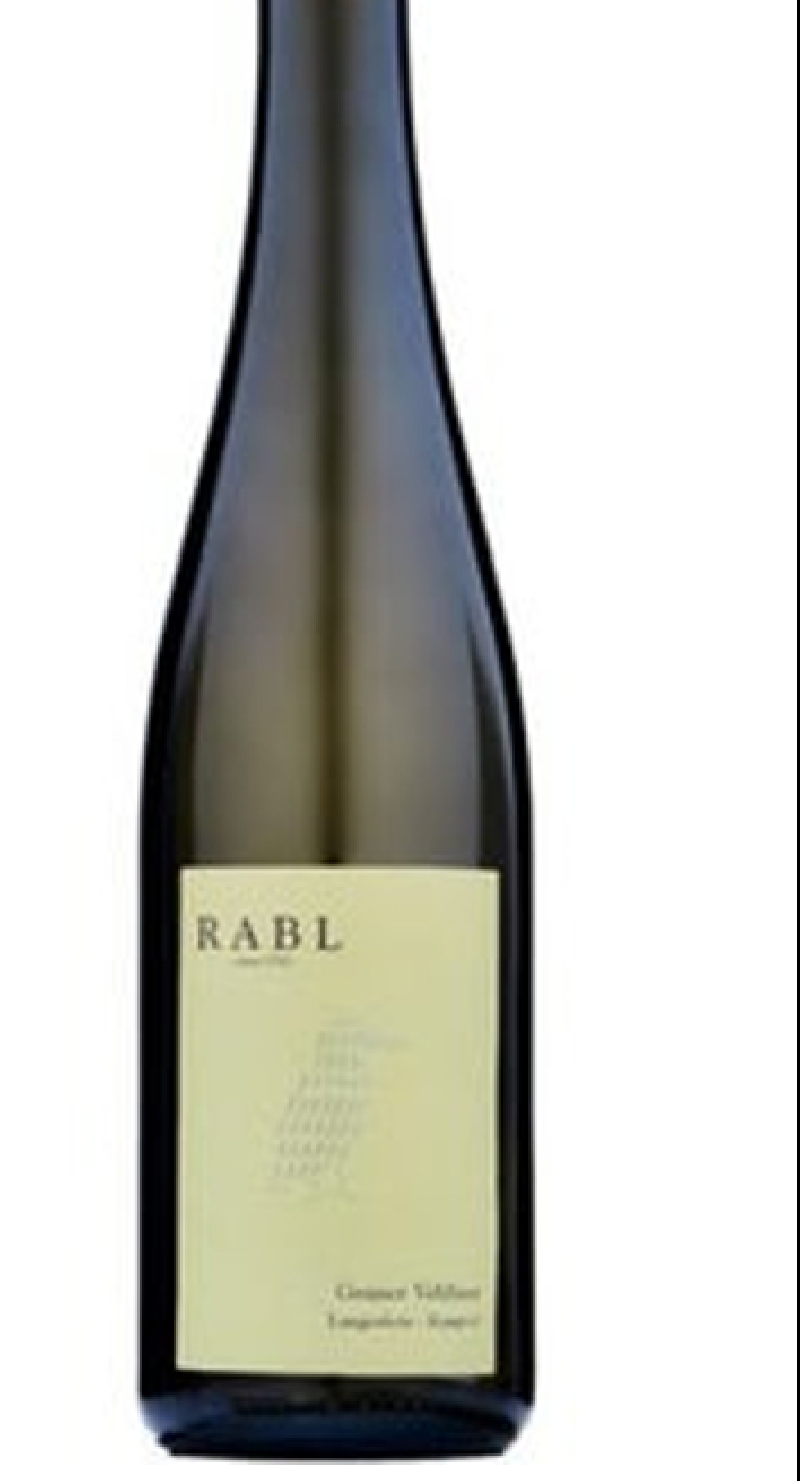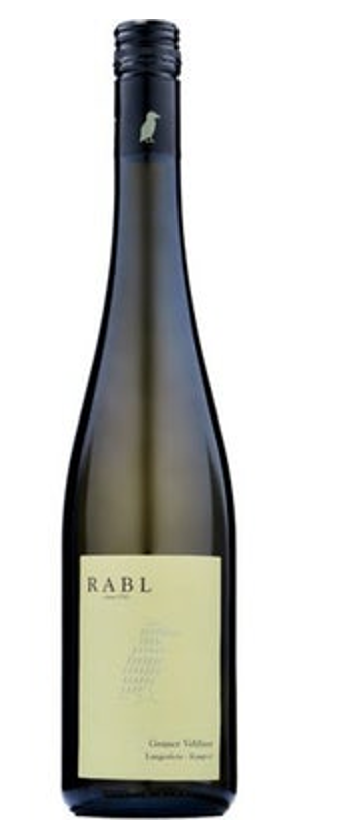

2021
Gruner Vetliner Weingut Rabl
“My great-grandfather Ignaz Deibl sold wine in wooden barrels to local guesthouses around 1900.
My grandfather Karl Pell started to fill bottles with wine in 1946. He was one of the first to fill 0,7 litre bottles. Even back in the 50’s my grandfather was filling Riesling from Schenkenbichl and Grüne Veltliner from Käferberg from different vineyards.
With the GV from Käferberg – vintage 1950 – he was the regional winner in the Kamptal-Wachau area in 1951.
Rudolf Rabl senior joined the business in 1968; Then, Rudolf Rabl junior joined the business. Start of increase in vineyard area from 20 ha to 75 ha
Rudolf Rabl Junior joined the business. Start of increase in vineyard area from 20 ha to 75 ha
In 2006, we won the “Decanter World award ” Decanter trophy the best white wine in the world with the GV Käferberg of 2004.
The 2005 vintage of our Käferberg won the “Austrian White Wine Trophy” at the “IWC” in London in 2007
In 2008 we won the “Sweet Wine Trophy” at the “Decanter” in London with our Riesling Trockenbeerenauslese 2006 and at the “IWC” in London the Ice Wine Trophy for our GV Eiswein 2006. Riesling Steinhaus 2007 was the winner of the “by the glass” at the Sommelier Awards and the RI Steinhaus 2008 gold medal winner. Since 1991 our wines have constantly represented at the Salon of Austrian Wine, whereby the Riesling Steinhaus managed 5 times in a row.
In 2009 we won 3 Langenlois champions and were crowned “Winery of the Year”. At the “Mundus Vini” we entered 3 wines and won 3 gold medals (all over 90 points). At the “Austrian Wine Challenge,” we were awarded 3 stars 3 times in a row. Plus we are listed in all Austrian wine guides. The latest news is – we have been voted “Winery of the Year” by the leading Swedish wine journalist.
The high quality of our wines is the result of a combination of a number of factors. To begin with some of the best locations around Langenlois are cultivated. Käferberg, Steinmassl, Steinhaus – all ancient rock formation – belong as well as the Loess areas of Spiegel and Kittmannsberg. “
From www.weingut-rabl.at
Classic Grüner Veltliner wines show citrus aromas (lemon peel and grapefruit) complemented by stone fruit and fresh vegetal notes and the variety's trademark hint of white pepper. But within this there are two key styles of Grüner Veltliner wine.
The first – lighter, fresher and focused on minerality and citrus character – is typical of Weinviertel. The wine often bottled with a slight spritz, to lift the wine and emphasize its fresh, fruity notes.
The second style – spicier, weightier and more complex – is embodied by the top wines from the warmer Wachau, Kremstal and Kamptal regions. These wines are richly textured and well structured, and require several years in bottle before reaching developed maturity. While most wines from this grape variety are fermented and aged in stainless steel or large old oak casks, some modern-styled weightier examples might be made using smaller new oak barrels.
With time they soften and take in honeyed, marmalade-like characteristics that match their attractive, deep golden hue. Some writers have noted similarities with mature white Burgundy. The bigger wines combine naturally high acidity and full-bodied texture making them a versatile and exotic alternative to Chardonnay.
The variety's name might be hard to pronounce for the uninitiated, but Austria's incisive marketeers have turned this to their advantage, dubbing the variety "Gru-Ve" and even "Groovy". Grüner means "green", which neatly reflects both the variety's yellow-green berries and the fresh green-pepper character that typifies Grüner Veltliner wine. Veltliner – a name shared by several European grape varieties (notably Roter Veltliner) – is thought to be a reference to the varieties' possible origins in Valtellina.
Grüner Veltliner is grown extensively in almost every Austrian wine region. The finest Austrian expressions come from vineyards above the Danube River, in Wachau, Kremstal and Kamptal.
Unfortunately the late-ripening variety has not proved successful in the cooler, wetter climes of neighboring Germany, or anywhere else in northern Europe. It is also widely cultivated in Slovenia and the Czech Republic, and to a lesser extent in northern Italy, New Zealand, Australia and the United States.
Kamptal is a small, increasingly prestigious wine district located 55 kilometers (35 miles) northwest of Vienna, northern Austria. Steep, sunbaked, sparsely soiled terraced vineyards overlook the river Kamp. They produce some of the world's finest white wines: rich, spicy Grüner Veltliner and flinty Riesling.
In 2008, Kamptal received a DAC classification for these wines, which must all be dry. They may feature a maximum 15 percent component of other permitted varieties.
"Standard" wines must reach a minimum of 11.5 percent alcohol. Kamptal DAC wine labels may feature an indication of the municipality where they are grown. These must attain 12 percent alcohol by volume.
This figure rises to 12.5 percent for labels displaying the municipality and a single vineyard. The DAC Reserve designation may be used for fuller-bodied wines with at least 13 percent alcohol.
Famous sites include Heiligenstein, Gaisberg, Steinmassl and Lamm. These are among 18 sites ranked as Erste Lage (grand cru) in the 2010 classification of the ÖTW growers association.
A growing handful of top quality dry reds are also made here from Austria's signature red wine variety, Zweigelt. Plenty of other grape varieties contribute to the region's wine output, from Pinot Noir to Chardonnay.
These wines fall outside the Kamptal DAC regulations, as do sweeter Rieslings and Grüner Veltliners. They are labelled with the Niederösterreich designation.
The Kamptal region
Based around the town of Langenlois, Kamptal is bisected by the southward flowing Kamp, in the final miles before it flows into the Danube. The vineyards lie mostly on south facing terraces above the river and on the lower lying ground in the south closer to where the Kamp meets the Danube.
Like its southern neighbors Wachau and Kremstal, Kamptal takes climatic influence from both the warm Pannonian Plain to the east and the cool Waldviertel forests to the west. A vital quality of the mesoclimate here is the marked diurnal temperature variation; warm grape ripening days are followed by cold, acidity retaining nights.
The steep terraces in the north of Kamptal, with their thin layers of topsoil, are particularly well suited to Riesling. The vines are forced to dig deep into the bedrock for nutrients and stability, resulting in stronger plants and lower yields.
Nowhere are the benefits of this clearer than in the famous terraced Heiligenstein vineyard, near the town of Zöbing. Heiligenstein Riesling is some of Austria's very finest. Grüner Veltliner seems to perform better in lower-lying areas, where the deeper soils (mostly clay and loess) contribute to richer, highly concentrated wines.
With Wine searcher help
- Type White
- Grape variety 100% Gruner Vetliner
- Appellation Kamptal
- Country Austria
- Region Kamptal
- Year 2021

